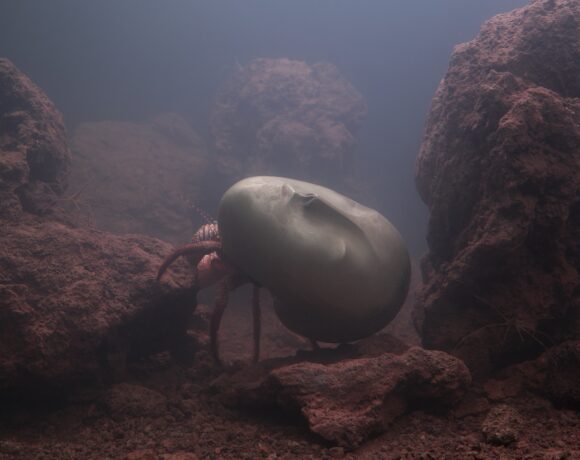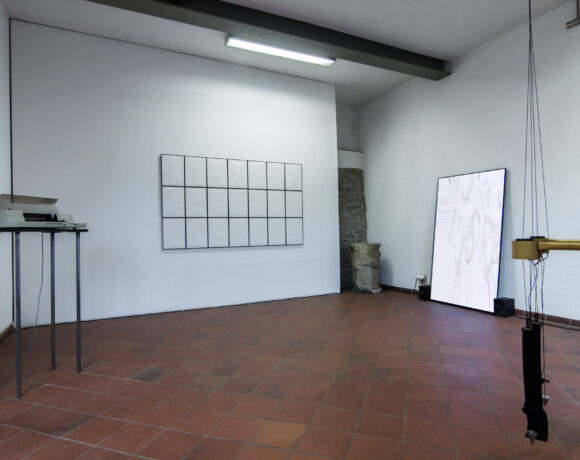“For thousands of years the meaning of things have seemed to leak from the depths of stone, wood, clay and iron, and the safeguard of myths, ideas and emotions one has sought to convey has lied in the steadiness of supports. Today we live in the “pseudolithic” time of an immaterial materiality. […] Therewith, we come in contact with real but immaterial worlds, where imagination can be staged without grounding it to the physics of matter.”
With these words, E.Manzini expressed himself in 1992 in his work Virtualità, giù nel cyberspazio [Virtuality, Down in the Cyberspace]. Still, more than 25 years later, questioning the sense and the influence of these transformations over the new society’s mindset means to perceive the perspective of development of cultural orientations which are related to this new millennium. In fact, even if society has changed under the influence of the technological innovation, it contributes in turn to the orientation, promotion and development of new applications.
At this point, it is not about thinking in terms of “impact” of the hi-tech usage in everyday life as well as in its economic and cultural aspects, but thinking in terms of vision, with one eye very firmly on the social implications resulting from the employment of these innovations.
What’s complex yesterday is given nowadays; what’s adequacy of employment yesterday may appear now as a new countering illiteracy.
In a globalised environment, the communicative resources of networks, the distribution of advanced applications, and the abatement of hardware costs, are tools by which remarkably diverse users ask for a customised fruition.
This process has contributed to redefine the shape of perception itself, and today the transition from the idea of user or consumer to that of participant can be considered as assimilated: mankind sets itself as co-creator of meaning and significance within a system where its cognitive and sensorial skills may be amplified and optimized.
That is the interactivity which has modified attitudes, expectations, mindsets and behaviors of the modern mankind, changing in other words its relationship with time and space; any innovation for which the masses may perceive the usefulness, becomes a necessity longing for another one, and the modern “futuristic vagaries” of enthusiasts and insiders are to be tomorrow’s routines before long.
The “technological revolution”, and especially its applications in the field of culture, is subject to evaluations and diverse interpretations, precisely because of far-reaching effects which are taking place in the traditional structure of society.
There are those who would stress the pressing development of the whole society, while others include it as grounds for a new barbarization and burden of social diversities between new media holders and new outsiders, who have been excluded because of their technological illiteracy or because they stop on a low degree of knowledge in view of a friendly interface.
Therefore, understandable is the disorientation that may rise in some individuals, generating gregarious behaviors or refusal prejudices among the so-called “apocalyptic and integrated” intellectuals by Umberto Eco, who are equally intolerant whether it is a position of adequacy or a technological approach.
However, there is no way of getting around the fact that we are facing the evolving qualitative and quantitative needs of enjoying culture.
Indeed, studies are constantly increasing, the critique is growing wiser and new mental categories are being defined, while the “added value” to the conventional methodologies becomes a basic condition for a “global” knowledge.
The Department of Cultural Affairs is the chosen scope of such developments, and in a few decades it has experienced a proliferation of alternatives for preserving, managing and enjoying the artistic heritage in terms of quality and quantity. At the last stage of its evolution, the musem has shifted to integrate new forms of communication and exhibition formulas.
Starting from being a place for conserving artifacts and works of historic and documentary interest, as well as being a cultural institution for promoting the search for and the spread of culture, the department now suggests an innovative educational criterion aimed at totally engaging the new, outnumbered and more demanding visitors.
E.Emiliani was fully aware of the obliging wonder with which we assimilate the gathering technological changes to which we grow accustomed, by identifying the museum as “the operative model proposed to us by the age and the culture that implemented it”, and its museographic proposal as “the result of a whole culture”.
The sciential role technology may play in the field of cultural assets is warranted by the acknowledgment of the undying importance of the work of art as a “physical asset”, by the dual polarity between historical document and artistic and cultural witness, between “structure” and “appearance”. If the matter is subject to physical laws and is therefore going on weakening itself, its “information” may pass on indefinitely; today, the image digitalisation and the employment of advanced applications have permetted to preserve and bring filing archives of images to fruition in globalised terms.
Benefits brought by the employment of new technologies aimed to ensure “the future of the past” are remarkable, because if it’s true that nothing will be able to replace the thrill of finding yourself face to face with an original work of art (which is subject to the prejudicial and therefore confining wear, arising out of the use of the asset), on one side, they preserve the works in their historical accuracy (size, tone, state of preservation, gaps…) to project them into the future and bring them to fruition to a wide and diverse public; on the other side, new technologies permit complex marketing strategies, aimed at the activation of righteous processes of preservation, management and fruition of those works.
The employment of new hi-tech cognitive tools has led to quite a few methodological problems for both those working with them and end-users, who are asked to get constantly acquainted with languages that, wherever they are not published, are constantly evolving and require a certain flexibility in the way of perceiving and associating inputs.
Operators who work with data entry and its architecture are asked to organise the simple, logical and consequential structures of operations to be conducted in order to obtain and enjoy specific contents; nevertheless, guarantees of quality of information are invited when it comes to the sensitive reshaping of the original document into its digitalisation; the responsibility of respecting the original work is entrusted to them, in order to ensure the veracity and the scientific, historical and artistic compliance of digital information with the original document, be it visual, sound or textual.
Facing the virtual and multi-sensorial play of a work of art, we believe its spirituality is not lost, therefore the scholar, the researcher or the man remains the one and only architect of the transformation of the thought into image.
In an increasingly hi-tech cultural context, if the implementation of new modalities of artistic fruition raises some critical and scientific issues, that is not unwarranted because, as J. C. Massera claimed, “the multi-sensorial investment, shall we say, is legitimated by the contemporary civilisation”. He explains that, if today our way of perceiving the world is subject to the employment of multiple channels, it is also true that the representations of the world fully legitimate the use of new technologies. In fact, they don’t preserve but rather suggest symbols of our own culture as a first field of analysis and application; for that reason, the technological and performative development of their employment will have to be contextually examined also in terms of organisational capacity and synergy of multiple economic and cultural factors.
It is important to make the user understand that if these efforts are aimed to draw his attention and offer him the opportunity to access whole archives of information and images, experiencing the noble value of art is different from its possibly immediate and constant dissemination, transmitted together with mass, promotional and consumption information.
For this reason, it is not futile to say that the difficult challenge between the medium and the “material beauty” or the “scent of the leaf” of illustrated volumes, cannot lead, in our view, to exceed the concept of and the “conctact” with the material object, but it represents a now essential support for an increasingly accessible and global knowledge, which adopts multiple languages and hierarchies, differentiated by importance and interest.
Lucia Gianfreda
 Nike of Samothrace – Louvre Museum, Paris. One of the highest marble expressions of the Hellenic civilization of the II century B.C
Nike of Samothrace – Louvre Museum, Paris. One of the highest marble expressions of the Hellenic civilization of the II century B.C
 The transposition and use of digital data has multiplied the data security requirements both in terms of quality and in terms of access authorization
The transposition and use of digital data has multiplied the data security requirements both in terms of quality and in terms of access authorization
 Current VCR viewers vs the futuristic (but not too much) optical viewers
Current VCR viewers vs the futuristic (but not too much) optical viewers
 Early Christian Basilica S. Maria di Siponto – Archaeological Park – Manfredonia
Early Christian Basilica S. Maria di Siponto – Archaeological Park – Manfredonia
Edoardo Tresoldi, Where art reconstructs time (2016). In an extraordinary combination of archeology and contemporary art, the artist virtually recreates the liturgical environments as if to make them look like a hologram in which the visitor can really move.
 cyber city
cyber city
 Gyula Benczúr (1844-1920), Narcissus, oil on canvas, Magyar Nemzeti Galéria, Budapest.
Gyula Benczúr (1844-1920), Narcissus, oil on canvas, Magyar Nemzeti Galéria, Budapest.
Experiencing beauty, starting from the etymology of the term esperiènza – lat. experientia, der. of experiri – means to make “direct knowledge, personally acquired through observation, use or practice, of a specific sphere of reality” that can not be substituted by any substitute of it.
 Philippe Halsman, Dalì Atomicus, Dalí Rotterdam Museum Boijmans. Paris Contemporary Designs.
Philippe Halsman, Dalì Atomicus, Dalí Rotterdam Museum Boijmans. Paris Contemporary Designs.
The shot sublimates the marriage between Dali’s surrealist idea and the expressive potential of photography, giving the viewer the sensation of participating in the bizarre reality depicted.

is a contemporary art magazine since 1980







NO COMMENT